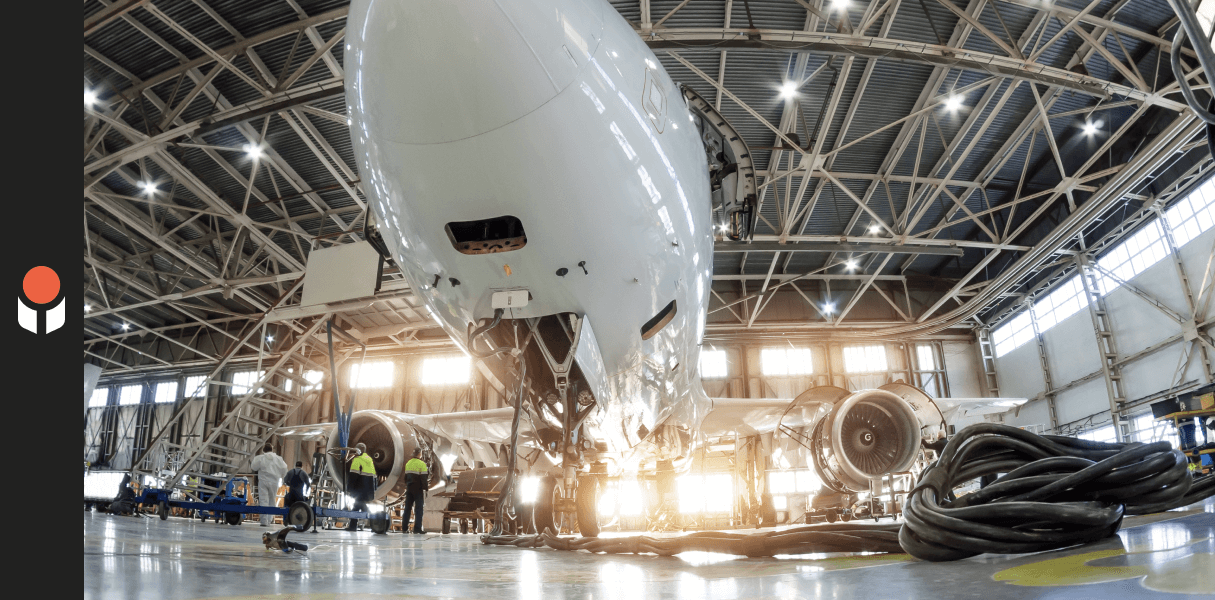A Complex Controls Upgrade Case Study
Redesigning An Aircraft Paint Hangar System
The manufacturer wanted to improve accuracy and efficiency, and eliminate costly delays caused by the need to repark aircraft during the painting process.
The Problem
The customer wanted to improve the air-handling system to make aerospace painting and curing more efficient. At the same time, the customer wanted to simplify system wide maintenance procedures.
Pain Points
• Needed engineering to fill in and work for hire
• Tight schedule
• New technologies
• Collision avoidance
• Cranes
• Explosive environment
This aircraft manufacturer required a complex, multi-faceted control system upgrade for its plane-painting hangar.
One key was the OnGuard Collision Avoidance System. For greatest efficiency, painters must quickly get very close to the aircraft. Using 3D modeling, multiple PCs, a PLC interface, and theodolite surveying equipment, our engineers developed one of the most unique, sophisticated collision avoidance methods ever designed.
The result was an aerospace control system that allows for flexible aircraft parking but it is also highly accurate; the operator cranes can quickly reach within 4 inches or less of the aircraft without risk of contacting it. This control system upgrade also offers extreme reliability and operator-friendly interaction.
The Solution: A Controls Upgrade for Aerospace Paint Facility Modernization
The Process Air System was another critical piece of this project. The assigned Concept process control engineer used only one ControlLogix processor to manage the entire air-handling system with function block programming. Through the software, the engineer produced much more accurate control of dramatic temperature shifts, despite significant differences in the air handling system’s mechanical components.
Providing an easy-to-maintain system was important to all subsystems in this complex project. Although several of our engineers were on the team, they all programmed on the same RSLogix 5000 platform and used consistent programming structures and naming schemes. Now, the customer’s maintenance crew only has to know one platform for system troubleshooting and modification.
Consistency throughout the hangar was also maintained in the off-the shelf Allen-Bradley PowerFlex drives used in the various sub-systems. Even if drives serve very different purposes, they were programmed in a similar manner. Maintenance personnel again benefit greatly from Concept’s standardization practices.
Encoders improve accuracy and repeatability
Another major system improvement in the paint hangar involved the encoder systems. Linear encoders chosen for the cranes provide tremendous accuracy and repeatability. Absolute encoders, also used on the cranes, do not require time-consuming re-homing/re-calibrating after a power loss or maintenance downtime like in the old system.
Inexpensive, explosion-proof, encoders on the wingstands provided precise platform heights and angles. All the hangar’s encoders delivered the tight tolerances, high accuracy and repeatability required for their critical operations.
OnGuard
Our Collision Avoidance solution is comprised of several smart technologies:
• Allen-Bradley ControlLogix PLCs
• Allen-Bradley RSView SE (Operator Interface/HMI)
• Allen-Bradley PowerFlex 70 & 700 Drives
• Allen-Bradley Motor Control Centers with DeviceNet
• Allen-Bradley Flex Ex I/O with Intrinsically Safe Devices
• Microsoft Visual Studio 2005 with C++
• Specter Instruments WIN-911 for alarm notification
• TraceTek Leak Detection System
• Intrinsically Safe Control
The Results
This complex project involved several of our engineers working on very different subsystems. Consistent, expert programming resulted in a dramatically more accurate, efficient and maintenance-friendly aircraft painting control system:
• Extremely precise crane and wingstand movements with collision avoidance and greatly improved productivity
• More flexible collision avoidance system reduced costly delays of having to repark aircraft
• Improved air handling system enhanced efficiency of painting and curing processes
• Consistent programming and common device usage simplified maintenance
• Complete documentation improved system maintenance and troubleshooting
• Integration with existing network provided common login and efficient alarm notifications
Controls Upgrade: Project Details
Project Duration
24 Months
Technology Used
Allen Bradley Hardware
Microsoft Visual Studio
Spectre Instruments WIN-911
ROI
36 Months
Concept Time on Site
30 Days

